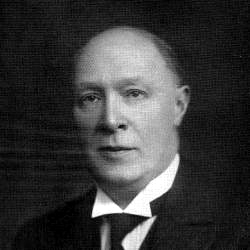Robert Stacy-Judd
Aucler, Paul
Paul Aucler (1865-1915) was a French archaeologist who published a reconstruction of ancient Carthage in 1899. The layout he presented has been commented on for its similarity with Plato’s description of the capital city of Atlantis.
Robert Stacy-Judd, a prominent diffusionist, was one such commentator, who was not suggesting that Carthage was the location of Atlantis, but when a similar layout was to be found at Tenochtitlan (Mexico City) and elsewhere, it, according to him, seemed to imply a common source of inspiration – Atlantis!
Bodichon. Dr. Eugene (L)
Eugene Bodichon (1810-1885) was a French physician and anthropologist who wrote in his 1847 book Études sur l’Algérie[0991] that “the Atlanteans among the ancients, passed for the favourite children of Neptune, they made known the worship of this god to other nations.” This has been interpreted by commentators, such as Robert Stacy-Judd[607.63], as a suggestion that the Atlanteans were the first known navigators.
Ignatius Donnelly quotes Dr. Bodichon as identifying the Atlanteans as the inhabitants of the ‘Barbary States’ or the Berber Coast of North Africa and that in turn the Berbers were related to the Bretons of ancient Armorica, who should also be considered Atlantean.
Swastika
The Swastika is a symbol that is said to have a 12,000-year-old history(I) and is occasionally suggested as having an Atlantean link. This is highly improbable as modern research has suggested that it was more likely to have originally represented an ancient cometary display in the sky(c),  explaining the ubiquity of the symbol around the world. Fernando Coimbra wrote a paper(h)on this subject in 2011.
explaining the ubiquity of the symbol around the world. Fernando Coimbra wrote a paper(h)on this subject in 2011.
In 1896, the Smithsonian Institution published an extensive paper by Thomas Wilson (1832-1902), a curator at the U.S. National Museum, demonstrating the global spread of the swastika symbol[1466].
Another site demonstrates the widespread use of the swastika and its variants in commercial iconography(d). In April 2014, a well-illustrated report(k) revealed that a 7,000-year-old piece of pottery with a swastika on it was discovered in Bulgaria.
I recall that my native Dublin had a firm, founded in 1912 by a Mr. Brittain, called the Swastika Laundry, which had their vans liveried in bright red with a white swastika on a black background. The business lasted into the 1960s. However, the use of the swastika in Ireland goes back much further, perhaps to pre-Christian times. St. Brigid, one of Ireland’s patron saints, is generally thought to be a Christianised version of the Celtic goddess Brighid. St.Brigid’s Cross, a popular symbol of the saint found all over Ireland, is considered to be a variant of the swastika. One Indian gentleman was amazed when he encountered a swastika inside the Catholic church at Ballintubber Abbey in Co. Mayo(s).
James Churchward claimed that the swastika was a symbol of his invented civilisation, Mu, while Robert Stacy-Judd speculated[607.243] that it had originated in Atlantis. Others have attempted(e) to link the swastika and its presentation in red, white and black to be in some way connected with Plato’s reference to the colours of the rocks found in Atlantis. In a 1959 article in Sykes’ Atlantis magazine by Arthur Louis Joquel II declared(o) that the swastika had been the symbol of Atlantis! No evidence was offered.
Leaving conjecture aside it can be demonstrated that the swastika was an ancient Hindu symbol and also used in the Indus Valley civilisation(b). In fact, the use of the swastika has now been traced back to circa 10,000 BC. This image is included in the incredibly well-illustrated lecture by Robert M. Chapple, which also includes a large section with many images of swastikas used from early Christian times in Ireland until the present(r).
While Heinrich Schliemann was excavating Troy at Hissarlik, he discovered many hundreds of swastikas throughout the site and was responsible for bringing what had been, until then, a benign symbol back to Germany, where it was later hijacked by the Nazis and came to represent oppression(n).
The long honourable history of the swastika should not be erased because of its abuse at the hands of the Nazis. The residents of Swastika in Ontario, have for decades steadfastly refused to change the name of their community, which has been in use since 1907.
In 1925, the people of Panama’s indigenous province of Guna Yala adopted a flag having a black left-facing swastika, said to represent the four directions and the creation of the world(p). Also in the Americas, Gary A. David has highlighted the use of the swastika in a more benign way by the Hopi of northern Arizona along with its innocent use in other cultures including the Minoans, as well as in 20th century USA(q).
Jacques Gossart wrote a book[341] on the history of the swastika and in Denys Eissart’s now inactive website, L’épopée atlante (The Atlantis Epic) he devoted a page to a discussion on the subject(a). More recently Richard Cassaro has published two articles(f)(g) highlighting the extensive use of the swastika. The articles are well illustrated including some fascinating images. He also attempts, unsuccessfully in my view, to suggest a link between the swastika and Atlantis. A Reclaim the Swastika website(j) is campaigning for the promotion of the swastika as a spiritual symbol as it had been in the past.
 A number of large swastika-shaped features have been spotted from the air(m). In 2007 it was announced(t) that “The Navy plans to spend $600,000 for ‘camouflage’ landscaping and rooftop adjustments so that 1960s-era barracks at the Naval Base Coronado near San Diego will no longer look like a Nazi swastika from the air.”
A number of large swastika-shaped features have been spotted from the air(m). In 2007 it was announced(t) that “The Navy plans to spend $600,000 for ‘camouflage’ landscaping and rooftop adjustments so that 1960s-era barracks at the Naval Base Coronado near San Diego will no longer look like a Nazi swastika from the air.”
(a) Svastikas (L’épopée atlante) (archive.org)
(b) https://upload.wikimedia.org/wikipedia/commons/3/32/IndusValleySeals.JPG
(h) https://www.academia.edu/2951519/The_astronomical_origins_of_the_swastika_motif
(i) https://www.ancient-origins.net/myths-legends/symbol-swastika-and-its-12000-year-old-history-001312
(j) https://web.archive.org/web/20201108132629/http://reclaimtheswastika.com/
(k) https://atlanteangardens.blogspot.ie/2014/04/7000-year-old-swastika-pottery.html
(l) https://www.ancient-origins.net/myths-legends/symbol-swastika-and-its-12000-year-old-history-001312
(m) https://mysteriousuniverse.org/2016/04/another-giant-swastika-spotted-this-time-near-roswell/
(o) Atlantis, Vol.12, No.3, March/April 1959.
(p) http://www.bbc.com/travel/story/20180813-guna-yala-the-islands-where-women-make-the-rules
>(q) https://www.academia.edu/8661508/The_Four_Arms_of_Destiny_Swastikas_in_the_Hopi_World_and_Beyond
(s) https://deshika.wordpress.com/2009/09/03/a-swastika-in-a-catholic-church/
(t) The New York Times, Sept. 27 2007
Stacy-Judd, Robert B.
Robert B. Stacy-Judd (1884-1975) was born in London where he trained as an architect. He moved to Canada before going south and establishing a  practice in California in 1920. He was totally fascinated by Mayan culture, particularly its architecture which led him to promote the ‘Mayan-Revival’ style of architecture in the United States.
practice in California in 1920. He was totally fascinated by Mayan culture, particularly its architecture which led him to promote the ‘Mayan-Revival’ style of architecture in the United States.
His interest in the Maya went further leading him to write a number of books on the subject including The Ancient Mayas: Adventures in the Jungles of Yucatan 19340902] and the still very impressive Atlantis: Mother of Empires[607], in which he produced a chart (p.254) showing many parallels between the ancient cultures of the Americas and those of the Old World together with the suggestion that many of these perceived common features had their origin in Atlantis.
He suggested that Atlantis was situated in the Atlantic and that it suffered three major inundations in 23,000 BC, 14,000 BC and 9,600 BC (p.174/5) leading to a succession of migrations and cultural diffusion. He believed that the Akkadian civilisation of ancient Mesopotamia was founded by colonists directly from Atlantis or by Cro-Magnons from Spain (p.162)!
He also totally rejected Churchward’s claim that the lost continent of Mu was ‘positively’ the birthplace of the Mayan civilisation, saying that Churchward’s arguments “lack corroboration, are illogical and unconvincing.”
A biography [596]of Stacy-Judd has been written by David Gebhard. An aspect of Stacy-Judd that I had not been aware of, was his psychic abilities, revealed in an online article(a) by Franklin Loehr, a Congregational minister.
Spence, Lewis*
James Lewis Thomas Chalmers Spence (1874-1955) attended Edinburgh University, after which he began a career in journalism that included a stint as sub-editor of The Scotsman. His book publishing began in 1908 with the first English translation of the sacred Mayan book Popul Vuh [257], followed by A  Dictionary of Mythology, so eventually, he had over forty works to his name. He was a keen Scottish Nationalist and stood for parliament in 1929. He was a founder member of the political movement that later evolved into today’s Scottish National Party (SNP).
Dictionary of Mythology, so eventually, he had over forty works to his name. He was a keen Scottish Nationalist and stood for parliament in 1929. He was a founder member of the political movement that later evolved into today’s Scottish National Party (SNP).
Among his literary output, which included mythology, occultism and poetry, were five books relating to Atlantis [256,258,259,260 262]. In 1932 he was editor of the Atlantis Quarterly magazine. He corresponded with Percy Fawcett and Sir Arthur Conan Doyle, advising the latter on the subject of Atlantis preceding the writing of The Maracot Deep and recently republished as Atlantis – Discovering the Lost City [235], another example of cynical publishing!
Spence at one point became the Chosen Chief of British Druidism and there is a claim that he was a member of at least one continental Rosicrucian organisation, although this report may be the result of confusion with H. Spencer Lewis, an American Rosicrucian. In 1941 he wrote [261] about the occult and the war, then raging in Europe. In that book he argued that the war was the result of a satanic conspiracy centred in Munich and the Baltic States. The following year he wrote [262] of his view that Atlantis had been destroyed as a form of divine retribution and that Europe was in danger of a similar fate.
His books were very popular with the general public but scorned by the scientific establishment, whom Spence mockingly referred to as “The Tape Measure School”. In truth his theories relating to Atlantis were highly speculative and often based on rather tenuous links. Spence believed that Atlantis was situated in the Atlantic and linked by a land bridge with the Yucatan Peninsula and that after the destruction of Atlantis, 13,000 years ago, the Atlantean refugees fled across this landbridge and are now recognised as the ancient Maya. A recent website(d) supports the idea of a landbridge from Cuba to the Yucatan Peninsula.
Spence believed that the ancient traditions of Britain and Ireland contain memories of Atlantis. An article of his on the subject can be found on the Internet.
In The Problem of Atlantis [258.205] Spence quoted a report that allegedly came from the Western Union Telegraph Company, which claimed that while searching in the Atlantic for a lost cable in 1923 that when taking soundings at the exact same spot where it had been laid twenty-five years before they found that the ocean bed had risen nearly two and a quarter miles. The account was quoted widely; however, not long afterwards, Robert B. Stacy-Judd made direct enquiries of his own to Western Union and the U.S. Navy, who denied knowledge of any such report[607.47]! It would be interesting to know the source of this ‘fake news’.
Spence’s The History of Atlantis [259] can now be downloaded or read online(c). In this book Spence offers his own composite translation of the Atlantis texts based on the English and French translations of Jowett, Archer-Hind, Jolibois and Negris.
A 2005 edition of the book from Barnes & Noble has an introduction by Professor Trevor Palmer.
Sprague de Camp in his Lost Continents [194] chose Spence as one of “the few sane and sober writers on the subject” of Atlantis and then proceeded to debunk much of what Spence wrote. [p.95].
It appears that among others, Spence’s work inspired the backdrop to a number of works by the pulp fiction writer, Robert E. Howard(e), who is perhaps best known as the creator of Conan the Barbarian.
(c) https://www.archive.org/details/historyofatlanti00spenuoft
Formorians
The Formorians are reputed to have been the earliest occupiers of Ireland after the last Ice Age, according to the Book of Invasions(e). Although the etymology of their name is uncertain a commonly accepted theory is that the term Formorian is supposed to be derived from ‘Firmorrichi’ meaning ‘men of Morocco’ conforming to a tradition that they came from North Africa. Thomas Dietrich is happy to accept[0217] the Moroccan connection as he considers early Morocco to have been a colony of Atlantis and so by extension to have brought Atlantean culture to Ireland.
Ignatius Donnelly in Part V, chapter 7(f) of his now rather dated 1882 book, Atlantis: The Antediluvian World also designates Ireland as a former colony of Atlantis. He also disputes the generally accepted etymology for the name ‘Formorian’, preferring to adopt the views of Col. Francis Wilford[0114] to support his contention that it means ‘from the west’, which according to Donnelly could only be a reference to Atlantis in the Atlantic.
However, the Irish Annals of Clonmacnoise(g) claim that the Formorians were descended from Noah’s youngest son Cham who according to the Bible was born 100 years before the Flood (Genesis 7).
The Ancient Pages.com website had an article in July 2017 with the misleading headline of “Formorians: Supernatural Race Of Giants Who Came From Atlantis”, without a single mention of Atlantis in the body of the text(h). Readers can draw their own conclusions about the reliability of A. Sutherland, the author.
Ronan Coghlan has suggested that “the CHAM referred to in the Annals of Clonmacnoise is not SHEM but HAM, noting that in the Vulgate translation of the Bible, Ham is CHAM”!
Robert Stacy-Judd[0607.237] followed Donnelly and accepted that the ancient Irish annals(b) describe the Formorians coming to Ireland ‘before the Deluge’ and having a fleet of sixty ships and a strong army. He also quotes the Annals of Clonmacnois which records that the Formorians ‘were descended from Cham, the son of Noeh and lived by piracy and spoil of other nations and were in those days very troublesome to the whole world.’ Stacy-Judd also speculates that Noah and his sons were Atlanteans!
The reliability of the Irish annals as historical documents is highly questionable, particularly when dealing with very early events.
James I. Nienhuis seems to have adapted some of Dietrich’s ideas for his Dancing from Genesis blog (Nov. 2007)(a) , although he does not seem to be clear on the difference between Ireland and Britain, as he places Newgrange in the United Kingdom and has the Formorians settling in Britain rather than Ireland!
The excellent Migration and Diffusion website(c) has a paper by Stuart L. Harris who puts more flesh on the bones of the idea of the Formorian invasion of Ireland from Galicia in Spain, which he dates at 2186 BC. However, Harris’ claims that “the Formorians spoke and wrote in Finnish” and that “until about 1200 BC, Ireland spoke Finnish, not Gaelic”, reflecting his obsession with the ancient Finns. Such a claim would be guaranteed the raise the eyebrows, if not the hackles, of many Irish academics.
Dale Drinnon has an extensive article on the Formorians in his Frontiers of Anthropology website(d).
(a) https://dancingfromgenesis.wordpress.com/
(b) https://www.scss.tcd.ie/misc/kronos/chronology/synchronisms/Edition_4/K_trad/K_synch.htm
(c) https://www.migration-diffusion.info/article.php?year=2012&id=333
(d) See: Archive 3570
(e) See: Archive 3628
(f) https://www.sacred-texts.com/atl/ataw/ataw507.htm
(g) https://archive.org/stream/annalsofclonmacn00mage/annalsofclonmacn00mage_djvu.txt
(h) https://www.ancientpages.com/2017/07/18/fomorians-supernatural-race-giants-came-atlantis/


